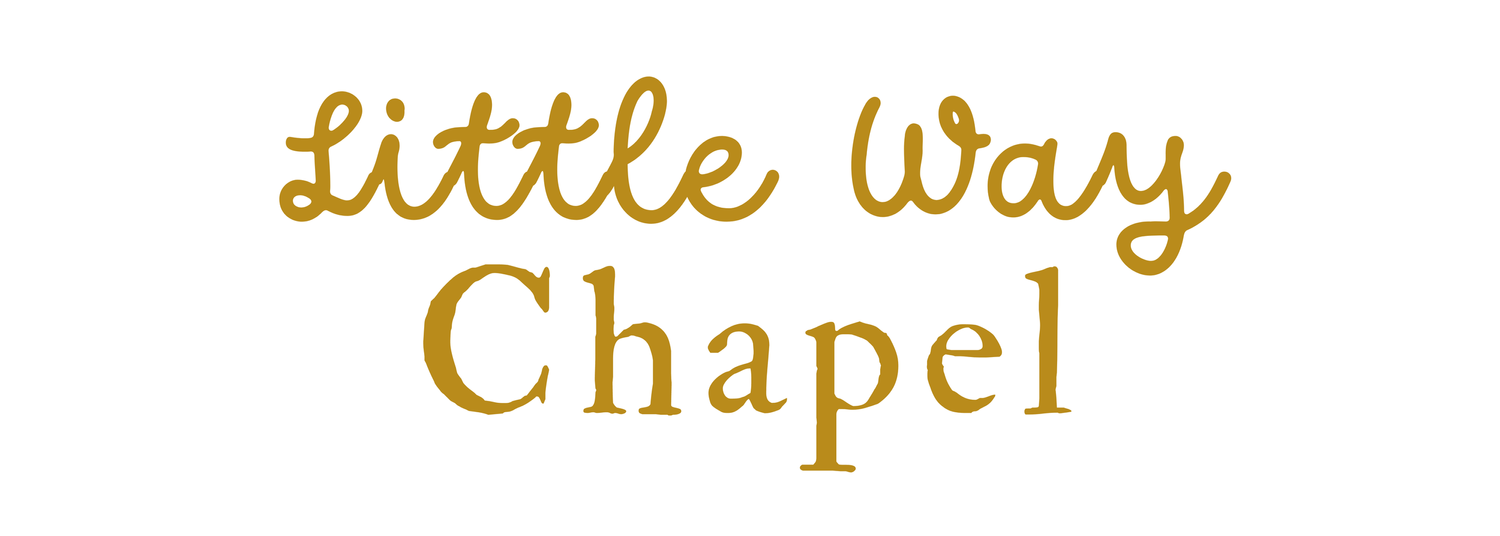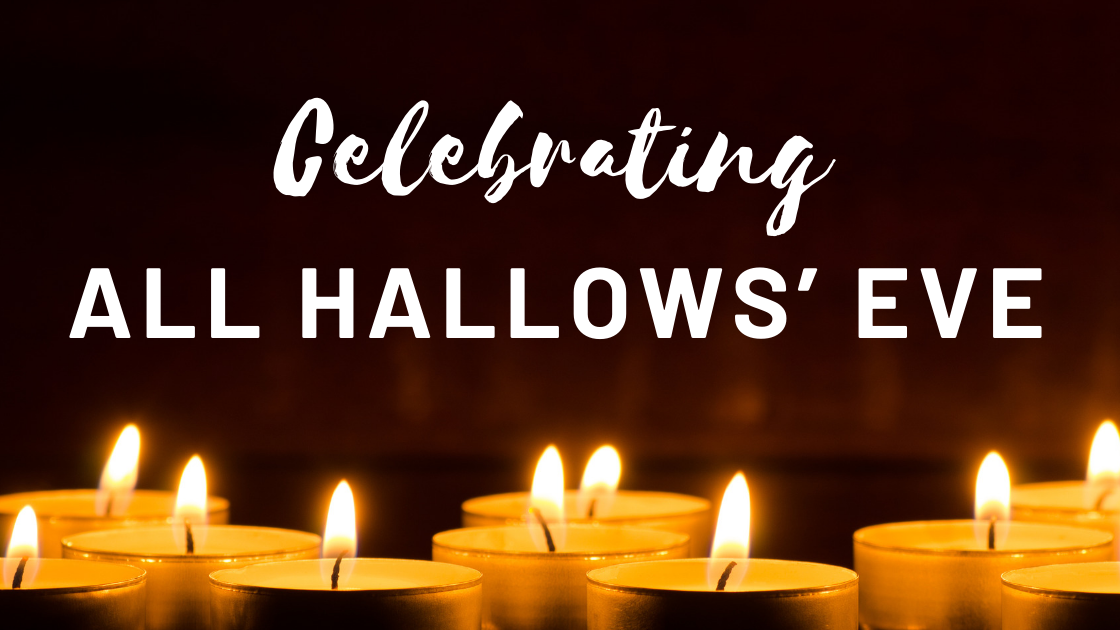A Beginner’s Guide to All Hallows' Eve
All Hallows’ Eve is just around the corner, and while many of us celebrate Halloween with Trick-or-Treating or parties, its less common to celebrate October 31 as an actual day of Christian worship. So what is All Hallows’ Eve, exactly? It’s a term we hear a lot this time of year, but might think is interchangeable with “Halloween.” That’s true in a way—the word “Halloween” comes from shortening “Hallow’s Eve”—but it’s not just that. For Christians, there is a rich history here to take hold of.
What is All Hallows’ Eve?
So, let’s start with the basics. What is a hallow? Well, hallow simply means holy, as the Lord’s Prayer suggests (“hallowed be thy name”), so a “hallow” is a holy person—a saint. All Hallows’ Eve, then, is the eve of All Saints’ Day—the day the church remembers all the women and men from St. Peter to St. Augustine to St. Thérèse—who have modeled holiness for us throughout the history of the church. All Saints’ Day is followed by All Souls’ Day on November 2, the day the church recognizes all the faithful departed—that is, every person who has ever lived and died in Christ, whether the church officially recognizes them as a saint or not. On All Souls’ Day, many churches hold services that specifically remember loved ones who have died in the last year.
For over a century, the Church has observed All Hallow’s Eve as an evening vigil to watch and wait for these two holy days that honor the friends, family, and heroic saints who are now part of the “cloud of witnesses” spoken of in Hebrews 12:1, cheering us on from heaven as we run the race set before us. All Hallows’ Eve is similar to Christmas Eve in that we are eagerly and festively anticipating the holy day that follows.
So, to recap: October 31 is All Hallows’ (Saints) Eve, November 1 is All Saints’ Day, and November 2 is All Souls’ Day. Got it? Good!
Where did it come from?
So, now that you’ve got the basics, you might be wondering how witches and goblins came to be associated with these holy days on the church’s calendar. Likely because October 31 through November 1 was the date of a Celtic festival called Samhain, which marked the end of the harvest season. The Gaels believed that beginning at sun down on October 31, the boundary between the dead and alive thinned, and the dead would return home seeking hospitality among the living. If the dead were not appeased, they would wreak havoc on livestock and crops, causing sickness and famine. So on October 31, the Gaels would don costumes, light bonfires, and imitate sorcery practices in order to ward off evil spirits and appease the dead. All hell would break loose and these festivals would often devolve into nights of havoc and terror.
In 835 the church supplanted this pagan festival, setting All Saints Day on November 1, the same day as Samhain. They replaced the havoc and mischief created by the evil dead on Samhain with a hopeful watching, waiting, and celebration of the holy dead, God’s saints.
This history presents us with two views of death: one as terrifying and haunted, the other as hopeful and holy. The church has chosen the latter, and on October 31 we make a party out of it. All Hallows’ Eve is an opportunity for Christians everywhere to celebrate the work God has done in and through his saints, and that neither their stories or ours will end in the grave.
5 Ways to Celebrate All Hallows’ Eve
The question isn’t whether we should celebrate All Hallows’ Eve, but how we ought to celebrate it. Here are some ideas:
Attend a Church Service: Though it’s more difficult to find Protestant churches that hold All Hallows’ Eve services, I assure you, they do exist! When I was at Duke, the Chapel always had a beautiful candlelit vigil at 10:30pm on Halloween, with readings from the lives of saints and a bonfire outside afterward. One year, Brendan and I got roped into holding torches up in the rafters of the chapel for this service, and it was one of my coolest experiences in grad school. If you can’t find a Protestant service, I’m sure our Catholic brothers and sisters would welcome you for an ecumenical worship experience.
Saint Costumes: This, of course, mostly applies to children. Whether they are going to a party or trick-or-treating, dressing up like a saint is a fun way to highlight our Christian heritage. I think Joan of Arc of the Archangel Gabriel would be way cool. Personally, my daughter wants to be a lawn gnome, and I think that’s okay, too. Posting a link to saint costume ideas below!
All Hallows’ Eve Party: There are many ways to do this, but one of my favorite things I’ve done in my years of ministry was hosting an All Hallows’ Eve party that included a hunt for candy in our church’s cemetery. On Easter, we also held our egg hunt in the cemetery, and in both instances, it was a beautiful way of celebrating the power of life over death, and the communion we have with saints in heaven and on earth.
All Hallows’ Eve Bonfire: Before or after Trick-or Treating, light up your fire pit, and share some prayers around the fire (like I wrote about here!), remembering the saints, and thanking God for their witness. Let this bonfire contrast stand in direct contrast to the bonfires of Samhain. You can even let your kiddos chomp on their candy while you do it.
Trunk or Treat: I’m going to be honest, this is my least favorite option for both practical and theological reasons. Practically, who actually wants their kids to get an insane amount of candy as quickly as possible??? Not me—give me the neighborhoods with houses a block apart, and we’ll go home after 5 houses, thanks! Theologically, my experience of Trunk or Treat is that they are often more about resisting Halloween, and not about embracing All Hallows’ Eve. That said, I appreciate that they are a fun way to dress up and provide candy from safe and trusted sources. I also know that with a little creativity, Trunk or Treat can be hosted in a way that celebrates All Hallows’ Eve, with saint-themed trunks or costumes, or perhaps even just a short time of worship and education about the holiday.
I’ll be posting a simple family-friendly All Hallows’ Eve service that can be done at home or at church tomorrow. Make sure to submit your email below if you want it to come directly to your inbox!

